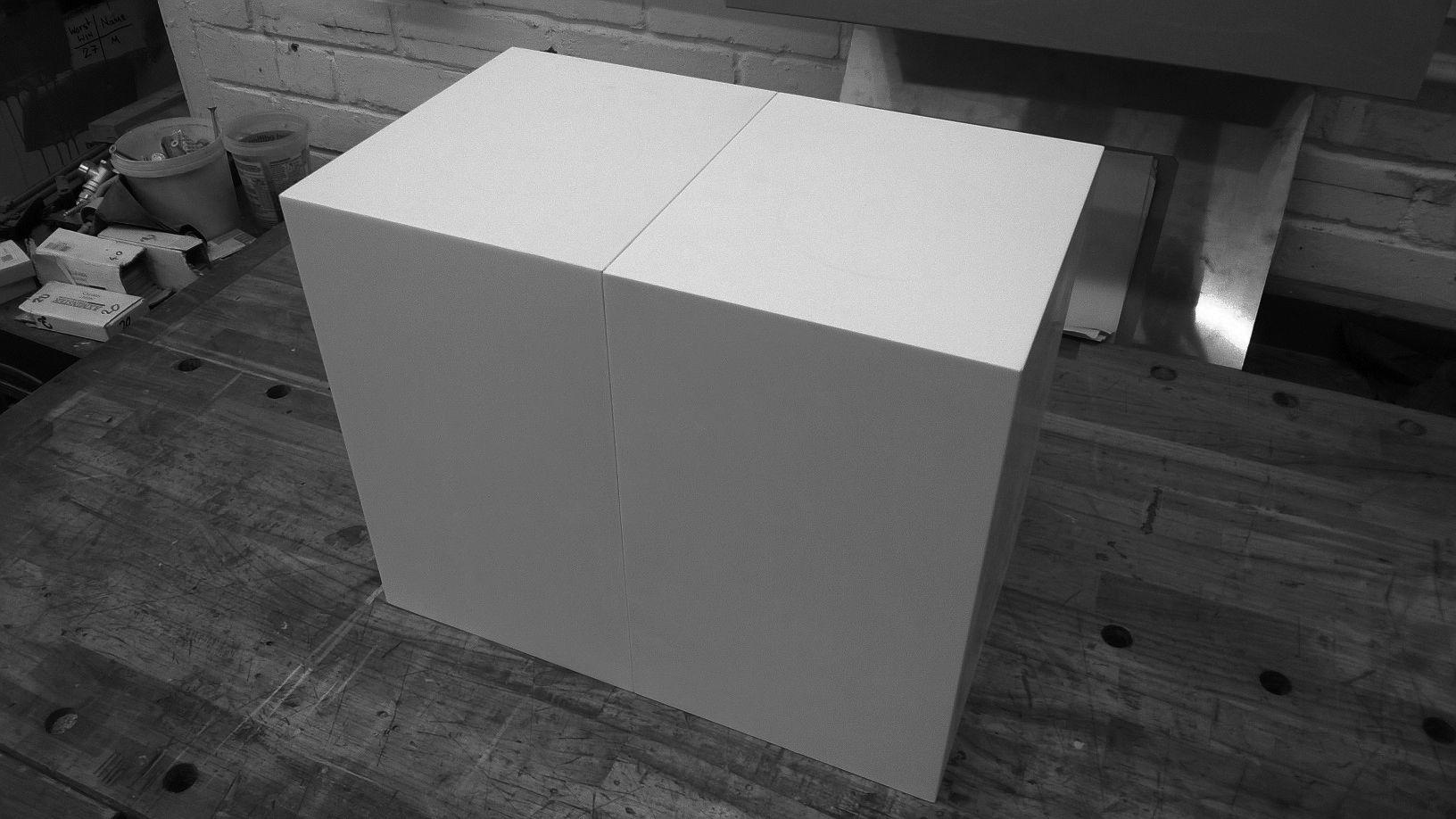What you will see here around you in this building has the appearance of a coherent collection of objects, all related to one or two people and a particular project. This may not be the case. There are a few reasons to suspect something else is afoot. The objects on display are here to produce a ‘floating’, isolated network of inferences which can only be accessed via a complete shift in perspective, eschewing of a certain amount of one’s own history, dropping of habits, etc. Of course, this is an old idea - ‘just forget your preconceptions, the truth is out there, etc etc’ - but remember, your preconceptions must be held at arms length, but held nonetheless, or the tiller is left unmanned, and then you’re only left with a jumble of artefacts. |
This text is transcribed from hand-written notes found in a hole in the Tunnel Shaft's wall. The script was microscopically small and difficult to decipher. Where gaps occur, this is indicated in square brackets. They appear to be part of something longer, now lost. Images have been included here which appropriate in order to illustrate the intentions of the author, such as they can be ascertained.
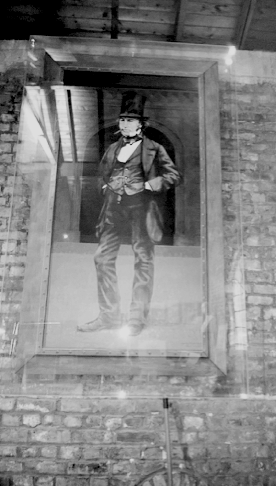
Image of the first proposed optical convergence (Image: the author, 2016)
Author’s note:
At the time of writing, no trace of any special composite materials could be found in the museum, and all the objects appeared to be displayed in an orthodox manner. However, a worker at the museum did profess to having some years before disposed of a number of small objects, made of ‘brown plastic with furry edges’ which would fit the description of the materials in question. The Micronesian Stick-Chart depicted above is one which seems to account for the visual features of the proposed superimposition most closely. There are two chief nodes which might indicate the two shafts at opposite ends of the tunnel.
'The nocturnal image, in which its waking state finds its identity in the apparition of phantoms, leads us to consider people with no psychic resonance as equivalent to the diurnal residue of the dream. We approach the world of phantoms as we would a reality lying outside of this world at odds with itself, a world with no valid correspondence within ourselves. In the world within which I like to breathe, a box can take on the same psychic content as a beloved woman; the delirious and fetishistic love between a man and a box thus casts a prophetic and thaumaturgic light onto the outer world. Phantoms will be approachable and commonplace, and we will no longer need the pretentious rituals of hypnotic séances to produce mediumistic phenomena; in a word when the mediumistic will be commonplace, the projecting of our unconscious will occur as automatically as a slip of the tongue.'
Gherasim Luca – The Passive Vampire
Place yourself in alignment with the large window at the far end of the museum, between the big photo of the tunnel and the end wall. [illegible] first person perspective which suggests the superimposition [?] of the reflection and image are not coincidental. Analysis of this reflective decoded combination would render a more profound reading of the tunnel's purpose. This lit matrix could suggest co-ordinates of some kind. There is a navigational ‘Meddo’ stick-chart in W.P’s collection […] under the river but to a different destination.

Marshall Islands Meddo navigation chart (See Second Proposed Optical Convergance)
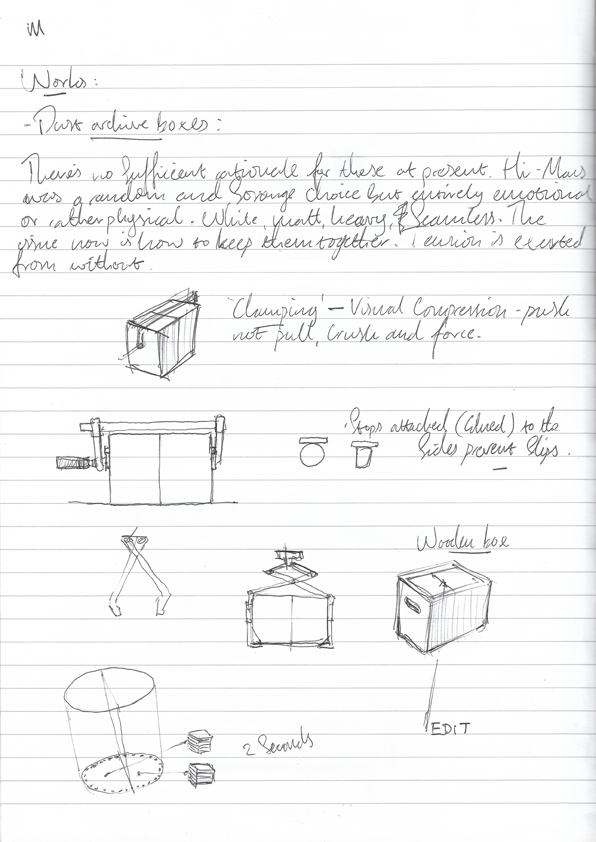
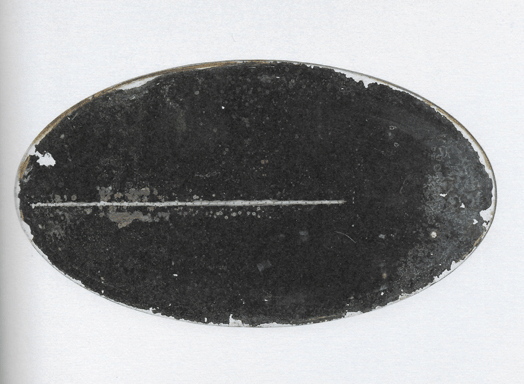
Terry Fox: The eye is not the only glass to burn the mind
The Cylinder A full circuit of the structure under question leads nowhere in most senses of the term; a person finds themselves arriving back where they began both physically and psychically and so the journey is muted, or perhaps negated, cancelled by the very materials and shape of the place traversed. Various features mark the way, but they are castrations. The gas-axed remains of I-beams that supported electrical infrastructure prior to the concrete floor being laid. A wooden beam of unknown function or provenance (the saw marks still visible on its end-grain) is nestled in mortar high above. The handrail supports which would have provided a good measure of reassurance once, then stripped of their rail, blasted with coal smoke and cinders for the best part of a century, now rust-deformed. A shoulder of brickwork muscles in near the concrete vaulted lid here, an access hatch there. At ankle-height, a piece of masonry pokes out because it is not otherwise. A traveler who does not look back forgets what was there just moments before – the structure is indifferent. One does not know which way to face and listening provides no clues – a problem compounded by the movement of the access door and staircase. Climbing into the old hatch and surveying the place from up on high (albeit through the safety of bars) confirms that the place has no orientation. Its shape formed of the exigencies of force and penetration; a cylinder will withstand forces from all directions and push back similarly. No solace can be found in the structure as no straight walls lead to a corner or alcove, corridor or vista. Original circumnavigations would have been helical, the sweep of the stairs for the passage of the human from or to the surface and onward, not the exit of dust – or of sound. Ascent and descent have been blocked, the ‘through’ cannot exist, and shelter is not provided. The walls silently shed mass by virtue of vibration, hydraulic pressure and crystallisation, as though the purposelessness of this volume of air causes that material which binds it to become indistinct. This cast-off is of uncertain status; how might one categorise particles that will break away come-what-may? How to activate these tiny architectural sub-forms? Is it dirt (‘matter out of place’ to use Mary Douglas’s famous definition) or is it data by virtue of its capture? Is the structure losing itself to time? But where does this structure begin and end? All parts of it are connected to all other parts of everything else, surely. By virtue of contagious magic, The Structure is of the same flesh as… St.Pauls, or the Forth Bridge, or an allotment in Devon (indeed why should the river matter? After all, The Structure was established as a means of its defeat).
One interpretation could be that the plates turn The Structure into something resembling an observatory - a collection vessel, sensor, antenna. In the closing years of the 19th Century August Strindberg left photographic plates out under the stars to capture unmediated cosmic light. In his study of indeterminacy in visual perception, Dario Gamboni mentions that Sndberg sent these images to Camille Flammarion, the French Astrologer and spiritualist, who ignored them in the same way that the dust in these images ignores its own supposed telos. |
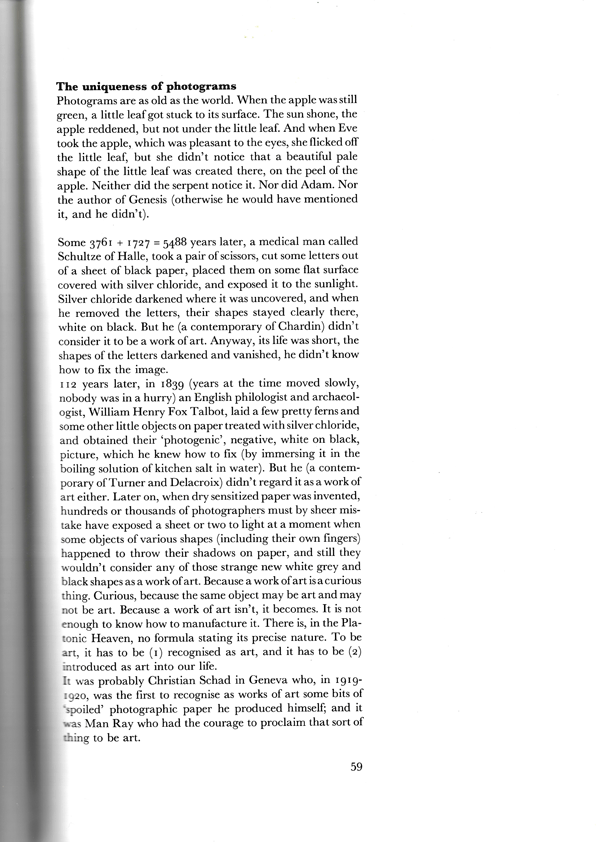 | 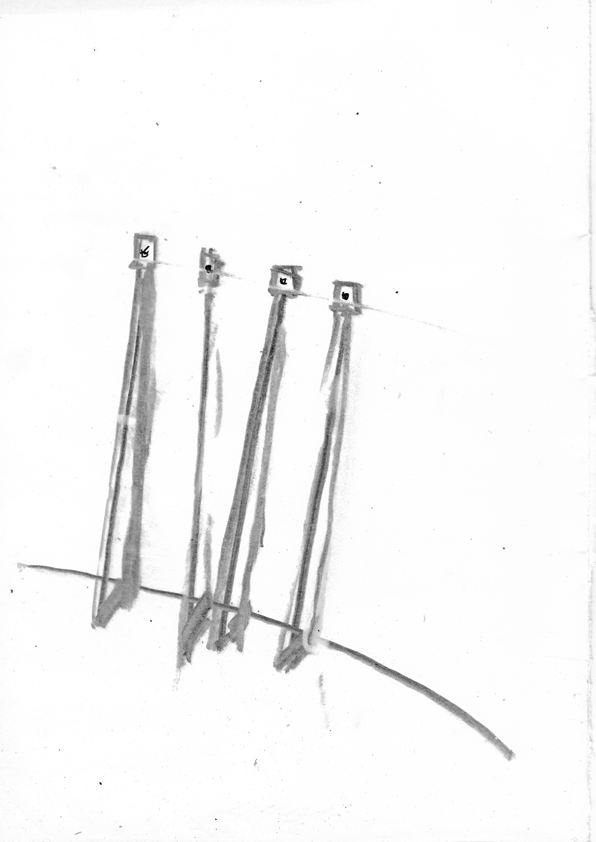 |  | 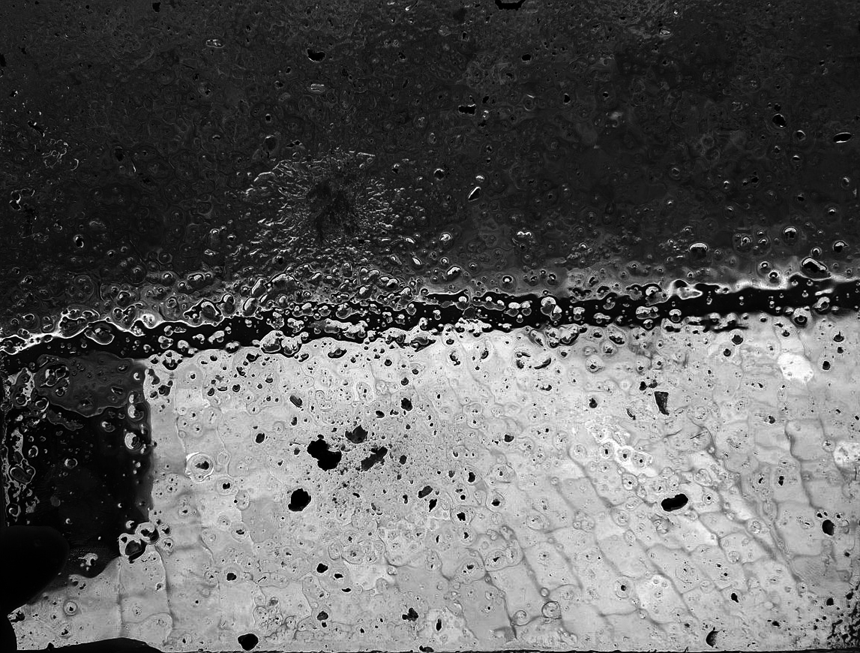 |
From this unattributed image, it seems that it was once possible to listen down into the excavations from above. The galleries below would have provided excellent audition points, enabling quite specific effects to be experienced or induced depending on the context of the event. It is apparent from this vantage point that a giant throat yawned up into the sky, funneling information to whomever might wish to listen. A casual glance at the morphology of the human esophagus, and specifically the vocal chords, lays bare the specific and acoustic purpose of this place. These structures (flesh, brick) are recapitulated within one another – whether the architectural ones are male or female is not known. Issuing from the furthest reaches of the excavations, carefully orchestrated sounds are evidently being produced. Various vehicles, animals, people were set in motion, choreographed in order to texture and encode the air with specific forms.
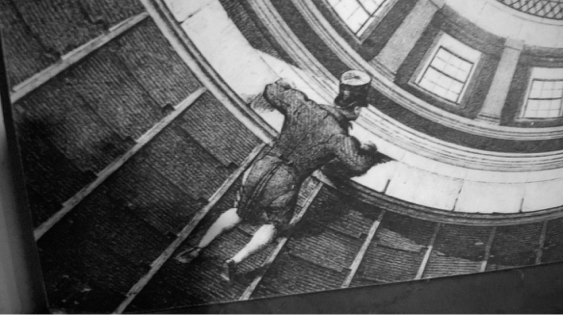
This person (most likely a man) is an eavesdropper; it's easy to spot this from his position and posture.
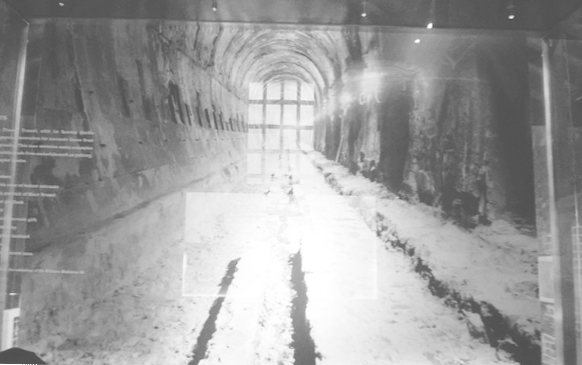
Image of the second proposed optical convergence (Image: the author, 2016)
“When there will no longer be on the earth a sole concern to contemplate, the constellations will reign again in the noise as they reigned before the appearance of man on this tiny globule. There are stars whose light shone some millions of years before we arrived … The luminous rays that we receive actually then departed from their bosom before the time of the appearance of man on the earth. The universe is so immense that it appears immutable, and that the duration of a planet such as that of the earth is only a chapter, less than that, a phrase, less still, only a word of the universe’s history."
— Camille Flammarion, La Fin du Monde (The End of the World)
The Structure haunts those who speak within it with their own voices and those of others. The curves of the walls produce capricious and...
[...]
A cylinder has been sunk into the Earth for reasons other than those admitted to. The tunnel under the river was a cover. It seemed now to be the imperative to find out what those reasons were

It is understood these were durational communications and not considered to be musical, although they might be thought of as such in retrospect. Certain clues as to their status within the community of ‘sounders’ has been unearthed in letters from the period, but as far as is known, these were effectively undertaken under the guise of standard traffic, albeit peculiarly noisy. Accounts of cartloads of specific animals under canvas being left for several minutes in certain mathematically significant places. Large sheets of thin hammered brass suspended by their resonant nodes on jute rope were wheeled on specialist trolleys (none of these have survived). At one point whole flocks of birds were released en masse to find their way into the light. Hollow wooden spheres were released dozens at a time to clack and clunk their way down the stairs to rest at the bottom before being removed by runners wearing Morris bells. Everything commenced before dawn and was over by mid-morning.
There are several figures (listeners) in this scene, the principle one at the bottom left, closest to the floating point of audition that this picture seems to wish us to occupy. They may also be sound producers resting for a while, or making their way partly toward the mouth in order to consume different resonances or tonalities. One of these is different though – he’s come from elsewhere…
The Agency of Walls Fragment: …It saddens me in some ways. I poke my head out and peer into a darkened and echoing space. What was once, a hundred years previous thronged with people of all sexes ages and classes. Now it is a blackened, blasted hole, smelling of damp and mould, capped with concrete and off limits. It has no place any more in the story of how we are creatures of leisure. This great brick edifice only now squats mostly buried next to the Thames as a surly rebuke to those who might wish for grander crossings than the claustrophobic and chilly foot tunnels at Greenwich and Woolwich. Having borrowed the keys and squeezed my way through the entrance door (protected by a flood wall to prevent a high tide inundating the railway), I had been careful to keep well away from the electrical plant, edging my way around the corrugated steel wall. It was being serviced that week but you can’t be too careful. Peering through the little observation hatch and out into the void, I’m trying to gain some sense of the dimensions of the place in the near total darkness. What then happens is a surprise. As a train rattles past below, a shudder consumes the whole place – almost too low in frequency to hear, but very much felt – the metal around me rattles and buzzes, and fear suddenly takes hold. A small discarded bolt dances around in circles near my foot. I glance out and can almost sense the darkness arrange itself into patterns – a most peculiar sensation and probably the vibration in my head. I confess to no small degree of confusion, since rolling stock like the A60 or A62’s don’t make noises like that, so something else must have been going on. Will mention it to W.P but doubt he’ll know much. |
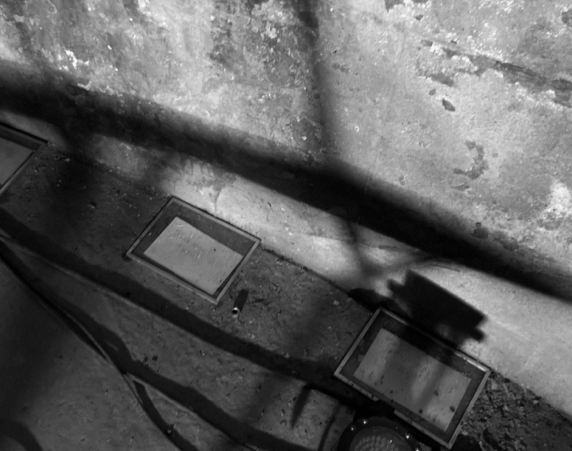
Capture Plates in situ. Reconstruction.

Capture Plate sequencing (reverberation data, 48 frames). Reconstruction.
Alfred Gell, after Lucretius, Epicurus (and Balzac!), saw much in this model of nested spectres, flowing from surfaces, gossamer thin and lightning fast. Eidolons, ghosts. If agency was to exert itself (and the person distributed) then this of course made sense figuratively. Dust (see also exuviae) is eidola held fast, now boxed. That week’s shedding of skins captured, however tenuously. 
This structure sheds its dust just as the wall reflects and sheds the sounds that it has been subject to. Both are articulations of of the ineluctably time-bound procession of energy and material. These capture plates (the archive) are analogues of the processes by which our ears apprehend the wall’s (one in continuum) signature – its gathering and broadcasting, lensing and disorientation. A Whispering Gallery. A ‘Stone Tape’. The dust is corporeal reverberation. Dust is not noise as those who insist on its exclusion from recorded sound media have insisted – not dirt or chaos or history, but is the way that the object expresses itself unaided. It constitutes a faint shadow of agency, of this cylinder making itself felt in another modality. Under the attentive or intimate visitor’s fingernails, a small communiqué may live unheeded and from there discarded [ …Section of notes missing.]
